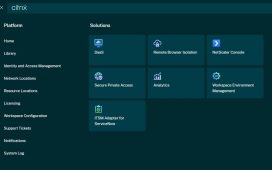Oracle stands accused of “predatory” licensing tactics after making changes to the Oracle Java SE subscription model that could force businesses to pay tens of thousands of dollars more each month for running the same software.
Industry experts have pointed out that businesses with limited Java use would have to license the software per employee under the new model, a dramatic shift from the one Oracle previously afforded them.
This week, Big Red – which acquired Java with its buyout of Sun Microsystems in 2009 – said the new Java SE Universal Subscription is “a simple, low-cost monthly subscription that includes Java SE Licensing and Support for use on Desktops, Servers or Cloud deployments.”
“Customers of the legacy Java SE Subscription products continue to receive all the original benefits and may renew under their existing terms and metrics,” it said.
It comes with an accompanying price list, which shows the key difference between the new and the old model is that Java will be licensed on a per employee, rather than a per user or per processor basis as the old model allowed.
Although Oracle promises to allow legacy users to renew under their current Ts&Cs, it is likely to pressure users onto the new model as time goes by, sources indicated.
Craig Guarente, founder and CEO of software licensing advisor Palisade Compliance, told The Register: “Oracle always moves customers to the new model at some time. Also, what is the pricing? There is no way Oracle will have some perpetual, no price increase policy.”
The shift would penalize companies which had spent years minimizing their Java usage, only to find they were being charged per employee, no matter how much Java they used, Guarente said.
“We have one customer who has a Java subscription, a Universal License Agreement for Oracle Java, the whole company, but now with the new pricing, their cost for Java goes up 10-fold. We have done analysis on several other companies and the average we’re seeing is 2x to 4x price increase that this will incur because customers were very good about minimizing Oracle Java usage and getting a lower price. That’s how you get leverage with Oracle.”
He added: “Not only can Oracle see that you’ve downloaded the software, but with Java, they can see that you’ve installed it and you’ve started to run it. One customer reached out to us saying, ‘Hey, look at what my Oracle rep has said. They could see we’re downloading this stuff and the renewal for the Java subscription happens in April, so they want to talk about the new pricing model’.”
Guarente told us another client had said: “This is predatory, even for Oracle.”
Nick Walter, CTO at Oracle support specialist House of Brick, said: “If Oracle runs true to form from past incidents of deprecating a pricing model or licensing metric then they will likely do their utmost to force customers into the new model. They may allow people to renew existing metrics and agreement but if they need any incremental license purchase then they will most likely be forced into the newer – and costlier – model.”
Nathan Biggs, House of Bricks CEO, estimated that a company with 250 employees, 20 Java Desktop Users and eight Java Installed Processors would pay $3,000 a year on the old model, which grows to $45,000 a year under the new subscription, a 1,400 percent increase.
“What this means for your organization is that regardless of your Java users or server footprint, you now must count every employee, contractor, consultant, and agent to determine your Java subscription bill. You are potentially on the hook for a massive subscription fee increase that may have very little benefit to your operation,” Biggs said.
We have asked Oracle to respond to criticism of its licensing changes. ®











